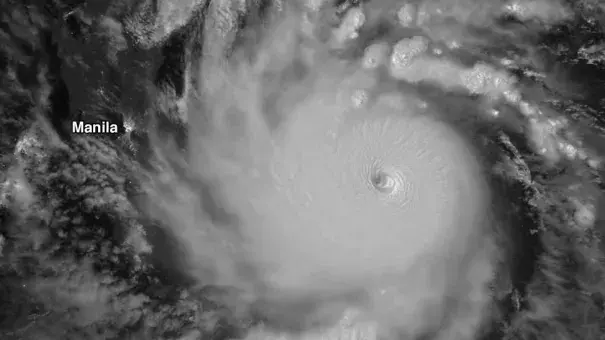Super Typhoon Goni slams into Philippines as strongest landfalling tropical cyclone on record

Climate Signals Summary: As the ocean warms, surface waters have more energy to convert to hurricane winds, which scientists say is likely increasing the intensity of the strongest storms. The fingerprint of global warming in the intensity of tropical cyclones has been identified in the Northwest Pacific basin.
Article Excerpt: Super Typhoon Goni made landfall near Bato, Catanduanes Island, Philippines, at 4:50 a.m. local time on November 1 (4:50 p.m. EDT October 31), with sustained winds of 195 mph and a central pressure of 884 mb, according to the Joint Typhoon Warning Center (JTWC). Goni was the strongest landfalling tropical cyclone in world recorded history, using one-minute average wind speeds from the National Hurricane Center for the Atlantic/northeast Pacific and one-minute average winds from JTWC for the rest of the planet’s ocean basins.
...
The top 10 strongest tropical cyclones at landfall in world history, according to data from the National Hurricane Center (NHC) and JTWC are:
1) 195 mph: Super Typhoon Goni, 2020, Catanduanes, Philippines;
2) 190 mph: Super Typhoon Haiyan, 2013, Leyte, Philippines;
2) 190 mph: Super Typhoon Meranti, 2016, Itbayat, Philippines;
4) 185 mph: Great Labor Day Hurricane, 1935, Florida, U.S.;
4) 185 mph: Super Typhoon Joan, 1959, Eastern Taiwan;
6) 180 mph: Hurricane Irma, 2017, Leeward Islands;
6) 180 mph: Cyclone Winston, 2016, Fiji;
6) 180 mph: Super Typhoon Megi, 2010, Luzon, Philippines;
6) 180 mph: Super Typhoon Zeb, 1998, Luzon, Philippines; and
6) 180 mph: Cyclone Monica, 2006, Northern Territory, Australia.
Ominously, seven of the 10 strongest landfalls in recorded history have occurred since 2006. Prior to Goni, 20 category 5 super typhoons with winds of at least 160 mph had hit the Philippines since 1952, according to NOAA’s historical hurricane tracks (IBTrACS) database.
...
A 2018 paper by Bhatia et al., “Projected Response of Tropical Cyclone Intensity and Intensification in a Global Climate Model,” used the highest-resolution global climate model that has been developed for studying intense tropical cyclones, HiFLOR. The model predicted a highly concerning increase in ultra-intense category 5 tropical cyclones with winds of at least 190 mph: from an average of about one of these Super Typhoon Goni-like storms occurring once every eight years globally in the climate of the late 20th century, to one of these megastorms per year between 2081 to 2100 – a factor of eight increase.


